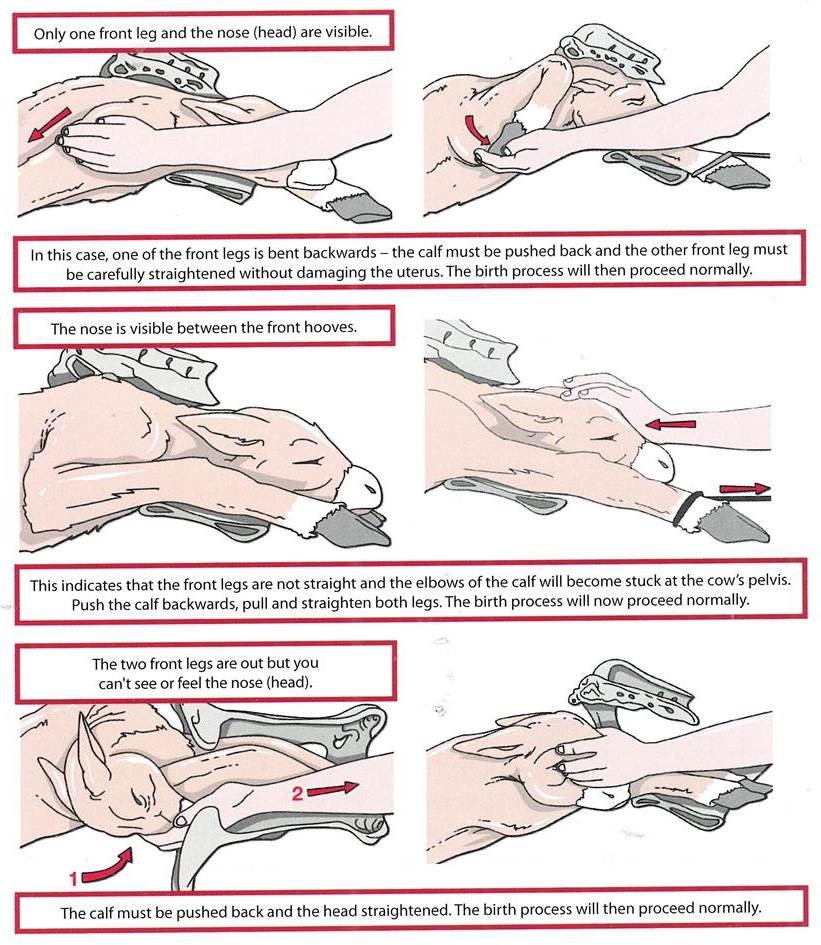Recognising Birth Problems
Experience and judgment are needed to decide when to assist with calving. After one or two hours of intense pushing, the forefeet of the calf should appear. If there are signs of distress, assistance should be provided. It is very important to wash and disinfect hands, arms, the cow's vulva and all equipment used during assistance. The position of the calf must be checked first and, if necessary, corrected before using traction. Traction should be applied as the cow pushes.
Intervention/Assistance
During stage 1 of the calving process:
If the cow gets contractions (uneasy, lies down and gets up again) for more than eight hours without observing the breaking of the water. Some abnormality is preventing stage 1 of the birth process to progress to stage 2.
During stage 2 of the calving process:
- If the water breaks or the water sack is visible for two hours and the cow is not trying to push.
- If the cow/heifer has been trying for over 30 to 60 minutes and is making no progress.
- If the cow has stopped pushing for more than 20 minutes after an initial period of progress. Breaks between pushing normally should not exceed five to 10 minutes.
- If the cow or calf is showing signs of excessive fatigue and stress — such as swollen tongue of the calf or severe bleeding from the vagina or rectum of the cow.
- If you observe an abnormal delivery. The basic rule is that if a trained livestock handler cannot assist to get the calf out in 30 minutes, call in the help of a veterinarian. Any further pulling or manipulation will just cause damage to the cow.
The first principle to remember is that if either the front legs or the head is bent backwards, the calf cannot come out. With the right training, the following three common problems (incorrect postures) can be observed and corrected easily when done soon after the water has broken, and the birth canal is still very wet and naturally lubricated.

After Calving
A process called uterine involution begins immediately after calving. The uterus shrinks in size considerably and layers of tissue must be renewed.
Although ovarian activity may lead to ovulation as early as 15 days after calving, this is usually not accompanied by heat (silent heat), and the first few cycles may be of short duration. However, more than 90% of cows should have been observed in heat at least once within 60 days of calving.